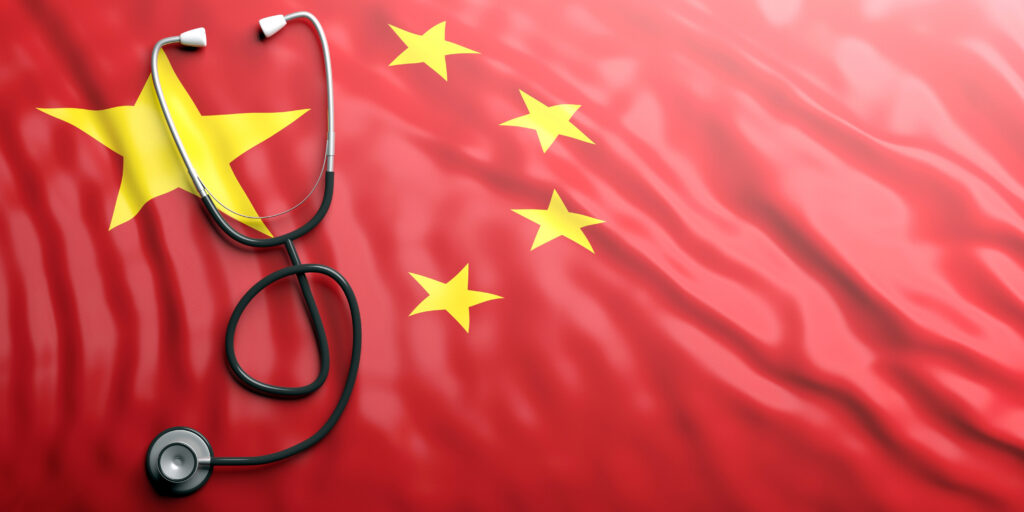 The hospital experience can be intimidating for the uninitiated. For hospitalists, however, the hospital is a second home—an environment where we manage patient care with familiarity and confidence. In the U.S., many hospitalists have never practiced outside the American system. This can lead to a narrow perspective on how hospitals might function differently across the world.
The hospital experience can be intimidating for the uninitiated. For hospitalists, however, the hospital is a second home—an environment where we manage patient care with familiarity and confidence. In the U.S., many hospitalists have never practiced outside the American system. This can lead to a narrow perspective on how hospitals might function differently across the world.
I recently had the rare opportunity to observe hospital operations in China, engage with physicians nationwide, and witness firsthand the nuanced differences in how inpatient care is delivered. What I discovered were not just procedural variances, but insights shaped by culture, economics, and patient expectations. This article outlines the most notable contrasts—and some surprising similarities—between Chinese and U.S. hospitals.
ED Admissions
Perhaps the most striking difference is the payment model in Chinese emergency departments (EDs). In China, a patient’s family is required to pay for the initial evaluation and treatment before services can be completed. These payments are typically determined by the patient’s presenting condition—such as pneumonia, gastrointestinal bleeding, or a fracture.
In contrast, U.S. hospitals provide emergency care immediately. Financial services may gather insurance details or begin payment discussions early, but treatment is rendered regardless of the patient’s ability to pay upfront. Charges are billed and processed later, often on a different calendar day.
Admission practices also differ. In China, admission is based on diagnosis: a patient with heart failure is admitted under cardiology, while one with a GI bleed is admitted under gastroenterology. U.S. hospitals typically admit patients through hospitalists, who then consult specialists as needed.
A notable Chinese innovation is the “Green Channel” system. In life-threatening emergencies like stroke, myocardial infarction, or trauma, hospitals may bypass all financial and family consent procedures to provide immediate life-saving intervention.
Admission and In-Hospital Financial Practices
In Chinese hospitals, admissions require a family member to make an initial down payment based on estimated costs. Additional charges are added throughout the stay, and families can track costs daily using hospital kiosks. Final bills must be paid in full before discharge.
U.S. hospitals generally bill after services are rendered, with insurance adjustments applied post-discharge. While some Chinese hospitals receive government subsidies, patients and families remain primarily responsible for payment.
Clinically, both systems are similar in that urgent orders are relayed directly to nursing staff, while non-urgent orders are placed in the electronic health record (EHR) for scheduled execution.
Consultations and Communication
Consultation protocols are nearly identical: urgent consultations are made by phone or direct communication; non-urgent ones are processed via EHR orders.
However, communication tools differ. U.S. hospitals use HIPAA-compliant systems to protect patient data. Chinese physicians commonly use WeChat—a ubiquitous messaging platform—on private, encrypted channels to discuss patient care.
Daily Care and Discharge Planning
U.S. hospitals rely on multidisciplinary teams—including nurses, aides, case managers, and dietary staff—to manage daily care and discharge planning. Case managers coordinate post-hospital services such as rehabilitation, durable medical equipment, and follow-up visits.
In China, due to limited resources and high patient volumes, family members assume many caregiving duties. They feed, clean, and assist with mobility. Physical and occupational therapy may occur only once, with families expected to continue exercises themselves. Families often bring food from home, and hospitals provide nutritional guidance to ensure balanced diets.
Rehabilitation practices also vary. Stroke patients in the U.S. are often discharged to dedicated rehab centers. In China, patients may stay in the hospital or be transferred to specialized stroke units until discharge home—often within the same hospitalization episode.
Pharmacy and Discharge Medications
One of China’s unique features is its integration of Traditional Chinese Medicine into mainstream care. Patients may be prescribed herbal remedies, roots, fungi, and even animal-derived components alongside Western pharmaceuticals.
Discharge medications in China can be obtained through the ED, ordered via smartphone apps (with room delivery), or picked up from in-hospital pharmacies. In the U.S., prescriptions are often sent electronically to a retail pharmacy or delivered bedside through “meds-to-beds” programs.
Discharge Process
The discharge process is similar in both countries. Medication reconciliation, discharge instructions, and follow-up appointments are documented in the EHR. In China, discharge plans may also be linked directly to a patient’s WeChat account for easier access and compliance tracking.
Billing Structures
China differentiates between public and private hospitals. Public hospitals charge less but may have long wait times. Private hospitals offer shorter wait times and enhanced services—at a higher cost.
Basic public medical insurance in China costs approximately 400 renminbi (about 60 U.S. dollars) annually. While this seems affordable, many rural residents opt out due to cultural norms or a lack of awareness. Insurance coverage typically ranges from 20% to 80%.
In the U.S., billing is complex and highly dependent on insurance. Patients may receive a combination of itemized and bundled charges, with multiple bills from providers, facilities, and labs.
Final Thoughts: What Can We Learn?
Though structurally different, both healthcare systems strive for patient-centered, compassionate care. Each has strengths that the other could learn from.
China could benefit from incorporating hospitalists to improve continuity, communication, and efficiency. The U.S., in turn, could explore more holistic treatment approaches, enhance the role of families in patient recovery, and pursue cost-reduction strategies.
Ultimately, what unites both systems is their shared mission: to treat patients with dignity, skill, and compassion.

Dr. Brodkin
Dr. Brodkin is a traveling flex medical director, leading care teams across diverse hospital systems, and is actively involved in humanitarian efforts, providing nutrition support and health screenings in underserved international communities. He is deeply committed to cross-cultural learning, healthcare innovation, and delivering compassionate, patient-centered care.